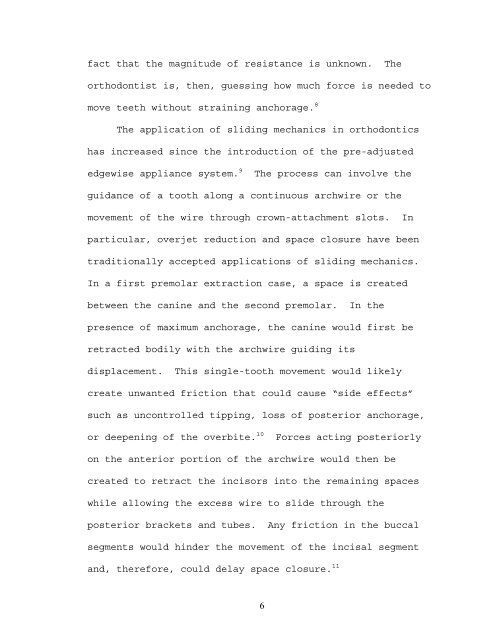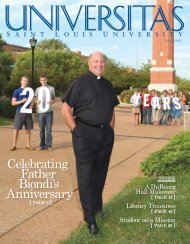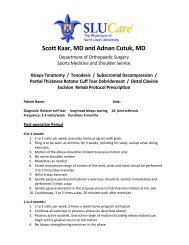The effects of third-order torque and self - Saint Louis University
The effects of third-order torque and self - Saint Louis University
The effects of third-order torque and self - Saint Louis University
You also want an ePaper? Increase the reach of your titles
YUMPU automatically turns print PDFs into web optimized ePapers that Google loves.
fact that the magnitude <strong>of</strong> resistance is unknown. <strong>The</strong><br />
orthodontist is, then, guessing how much force is needed to<br />
move teeth without straining anchorage. 8<br />
<strong>The</strong> application <strong>of</strong> sliding mechanics in orthodontics<br />
has increased since the introduction <strong>of</strong> the pre-adjusted<br />
edgewise appliance system. 9 <strong>The</strong> process can involve the<br />
guidance <strong>of</strong> a tooth along a continuous archwire or the<br />
movement <strong>of</strong> the wire through crown-attachment slots. In<br />
particular, overjet reduction <strong>and</strong> space closure have been<br />
traditionally accepted applications <strong>of</strong> sliding mechanics.<br />
In a first premolar extraction case, a space is created<br />
between the canine <strong>and</strong> the second premolar. In the<br />
presence <strong>of</strong> maximum anchorage, the canine would first be<br />
retracted bodily with the archwire guiding its<br />
displacement. This single-tooth movement would likely<br />
create unwanted friction that could cause “side <strong>effects</strong>”<br />
such as uncontrolled tipping, loss <strong>of</strong> posterior anchorage,<br />
or deepening <strong>of</strong> the overbite. 10 Forces acting posteriorly<br />
on the anterior portion <strong>of</strong> the archwire would then be<br />
created to retract the incisors into the remaining spaces<br />
while allowing the excess wire to slide through the<br />
posterior brackets <strong>and</strong> tubes. Any friction in the buccal<br />
segments would hinder the movement <strong>of</strong> the incisal segment<br />
<strong>and</strong>, therefore, could delay space closure. 11<br />
6
















